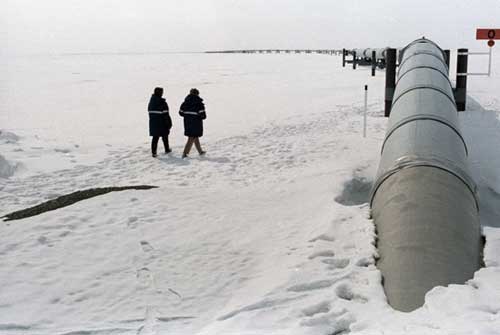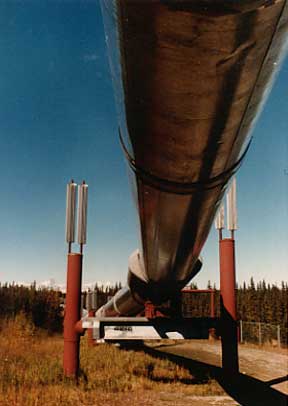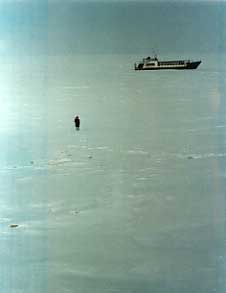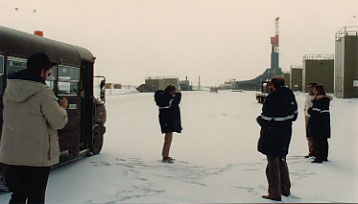|
Alaska's oil starts flowing south here: Mile Zero of the trans-Alaska pipeline.
Construction of the oil field facilities also was challenging. Buildings were shipped as modules during the short summer season when the Beaufort Sea was open for shipping. Crew quarters had to be raised on stilts so the heat of the buildings wouldn't melt the underlying permafrost. A typical North Slope worker spends two weeks on the Slope and then flies back to Anchorage for two weeks at home. Some Slope workers live in Anchorage or on the Kenai Peninsula; others commute by air from as far away as Texas. At the peak of production, 2 million barrels of oil moved down the pipeline each day. With declining production in recent years, the pipeline now moves about 800,000 barrels a day to Valdez, where it is transferred to tankers that take it to refineries in the Lower 48 states. The state's share of the oil field revenue was so great that it discontinued the state income tax, invested in big projects (not always wisely) and, within a few years, established a Permanent Fund that has grown to more than $30 billion in assets. An annual dividend from this fund is paid to every Alaskan who has lived in the state for the entire previous year. The size of the dividend varies from year to year; it is based on an average of the Permanent Fund's investment profits in the most recent five years. In 2007, the individual dividend was $1,654, one of the highest ever. The year before it had been $1,107. Oil field revenue has long contributed 80 percent or more of the funds for the state's annual budget, and that is one of the reasons why the state is a strong advocate for development of the neighboring oil field in the Arctic National Wildlife Reserve. It is also actively working to encourage the construction of a new pipeline, this one to transport the North Slope's natural gas. The estimated cost of the new pipeline is $20 billion. Under the most favorable circumstances, it would take several years for the new resource to be available for consumption.
Visitors to the North Slope oil field pose for some photos. Information sources include Alyeska Pipeline Service Co., which is responsible for managing the pipeline, the Anchorage Daily News, and CBS News and FEMA reports on the impact of the 2002 earthquake.
|
||||||||||||||||||||||||||||||||||||||||||||||||||||||||||||||||||||||||||||||||||||||||||||

 Alaska's
Oil
Alaska's
Oil 
